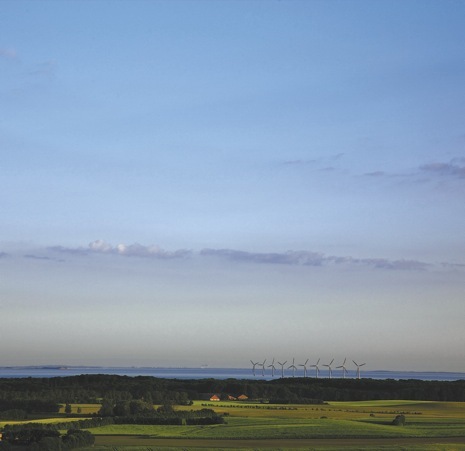Friday breakfast brainstorming topic: Settlements of the future

Conservative Vision: The island community of Samsø now exports energy to the Danish mainland. photographer Joachim Ladefoged
The suggestion came from Rodney District Council’s urban designer, Andrew Trevelyan:
It might be good at some stage to have a round table discussion with the team over a breakfast—topic being, ‘What will our future settlements look like?’
Of course have a very clear vision of what future settlements shouldn’t look like—the estimated 80 000 recently built homes that are not merely non-sustainable but are termed leaky.
It is tragic to consider that, during a period when sound materials and methods were available to at least build homes that were watertight and well insulated, we instead followed a fad for the Miami look, using often badly flawed design and workmanship.
But back to the future.
It possibly says something about the fickle human soul that, in spite of the predominance of the science fiction genre, there is little attempt film industry to depict life as it might be in just a few years hence, utilising technology and methods that are available but neglected.
Meantime, a real life example of how the future can be embraced is Samsø, the Danish ‘Island in the Wind’ of Elizabeth Kolbert’s New Yorker article.
Over a period of years the conservative island community came to own the concept of being carbon neutral—Samsø ended its dependency on oil shipped to the island for heating and coal-generated electricity supplied by submarine cable.
Now that cable, most of the time, exports wind-generated power back to the mainland.
So while we wait for the film industry to find the courage to depart from the thoroughly far-fetched, there are glimpses of the possible to be found. Elizabeth Kolbert describes the award-winning Forum Chriesbach, built for the aquatic research institute Eawag.
Equivalent examples of modest homes that are sustainable, however, evade even determined Internet searches. Alice Horrigan’s Affordable by Design long title states that building an eco-house on a tight budget is no longer an impossible dream.
Not impossible, perhaps, but tantalisingly elusive nevertheless. Horrigan quotes George James, program manager for the Department of Energy Building America Program:
We could solve an awful lot of the problems in this country if the average couple and their kids could move into a house they could afford … Most architects are only interested in that one-of-a-kind castle for somebody, and that’s not helping the overall situation.
The starter homes initiative design competition mooted by Shane Jones, of course, would be the perfect opportunity to build in serious sustainability elements. And that would in turn ensure that the starter home wasn’t a one-size-fits-all, but poorly, offering. A prime requirement for a sustainable dwelling is optimal solar orientation, which a single design cannot possibly address, and then there is the wind pattern, section slope and myriad other factors that need to be addressed.
And the significantly shaded sites, where the only hope of some winter sun might be some form of roof deck.
But a cleverly-designed sustainable starter home that could executed in a number of configurations to suit site dictates, could conceivably ‘solve an awful lot of the problems’.
